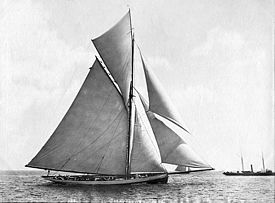
The America's Cup, affectionately known as the Auld Mug, is a trophy awarded to the winner of the America's Cup match races between two sailing yachts. One yacht, known as the defender, represents the yacht club that currently holds the America's Cup and the second yacht, known as the challenger, represents the yacht club that is challenging for the cup. The timing of each match is determined by an agreement between the defender and the challenger. The America's Cup is the oldest international sporting trophy. It will next be challenged for in March 2021.

The New York Yacht Club (NYYC) is a private social club and yacht club based in New York City and Newport, Rhode Island. It was founded in 1844 by nine prominent sportsmen. The members have contributed to the sport of yachting and yacht design. As of 2001, the organization was reported to have about 3,000 members. Membership in the club is by invitation only. Its officers include a commodore, vice-commodore, rear-commodore, secretary and treasurer.

America was a 19th-century racing yacht and first winner of the America's Cup international sailing trophy.

USS Mayflower (PY-1) was the second ship in the United States Navy to have that name. Mayflower was a luxurious steam yacht built in 1896, by J. and G. Thompson, Clydebank, Scotland for millionaire Ogden Goelet, who died on board Mayflower, in August 1897. Her sister ship, said to be almost identical and built at the same time and in the same yard for brother, Robert Goelet, later became USS Nahma.

The Puritan was a 19th-century racing yacht and the 1885 America's Cup defender of the international sailing trophy.

The yacht Mischief was the victorious American defender of the fourth America's Cup race in 1881 against Canadian challenger Atalanta.

Volunteer was an American racing yacht built in 1887 for the America's Cup races. She was the victorious American defender of the seventh America's Cup match that same year against Scottish challenger Thistle.

Galatea was the unsuccessful Scottish challenger of the sixth America's Cup race in 1886 against American defender Mayflower.
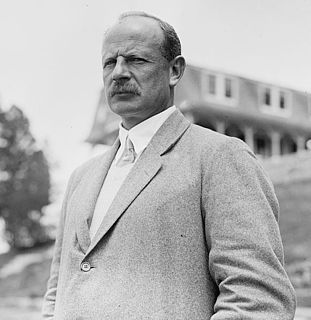
Guy Nickalls was a British rower who competed in the 1908 Summer Olympics as a member of the British eight that won gold, won 22 events at Henley Royal Regatta and won the Wingfield Sculls three times.

Edward Burgess (1848–1891) was an American yacht designer, born June 30, 1848 in West Sandwich, Massachusetts.

William Starling Burgess was an American yacht designer, aviation pioneer, and naval architect. He was awarded the highest prize in aviation, the Collier Trophy in 1915, just two years after Orville Wright won it. In 1933 he partnered with Buckminster Fuller to design and build the radical Dymaxion Car. Between 1930 and 1937 he created three America's Cup winning J-Class yachts, Enterprise, Rainbow and Ranger.

George Lawley & Son was a shipbuilding firm operating in Massachusetts from 1866 to 1945. It began in Scituate, then moved to Boston. After founder George Lawley (1823–1915) retired in 1890, his son, grandson and great-grandson upheld the business, which continued until 1945. Of the hundreds of ships built by the Lawleys, highlights include the yachts Puritan and Mayflower, respective winners of the 1885 and 1886 America's Cup.
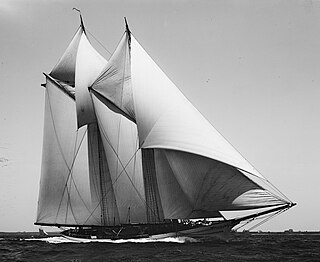
The Yampa was an American ocean-going cruising schooner yacht for pleasure use from 1887 to 1899. The yacht was originally built for Chester W. Chapin, a rail baron and U.S. Congressman from Massachusetts. It completed several ocean cruises with no accidents. It passed through several hands and ultimately was purchased by Kaiser Wilhelm II of Germany as a birthday present for his wife. He had another larger yacht built based on the design of the Yampa, which was named the Meteor III.

Herbert Mason Sears was a noted yachtsman and businessman in Boston, Massachusetts. He was awarded the Croix de Guerre for his contributions during World War I.

The Sylph was a 19th-century pilot boat first built in 1834, as a Boston yacht and pilot-boat for merchant and ship owner Robert Bennet Forbes. She won the first recorded American yacht race in 1835. The second Sylph was built in 1878 for the Boston Pilots. She was in the Boston pilot service for twenty-three years.

The America, No. 21 was a 19th-century pilot boat built in 1880 for the New York City and Sandy Hook Pilots. She was a replacement for the William H. Aspinwall, No. 21, that was lost off Point Judith, Rhode Island in 1880. She weathered the Great Blizzard of 1888 and was one of the oldest pilot-boats still in service in a time when they were being replaced by steam pilot boats. Another pilot-boat named America was built in 1849 for the Boston pilots. She was named America, after the famous America's Cup defender.
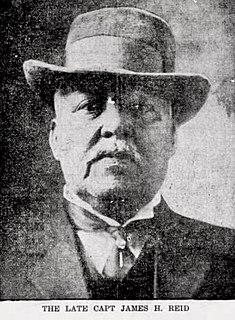
James H. Reid, was a 19th-century American Maritime pilot. He is best known for being the dean of the Boston pilots, serving for 55 years. He was captain of the famous yacht America for 17 years when she was owned by Benjamin F. Butler. In 1897, he built a new America, named after the America's Cup defender.
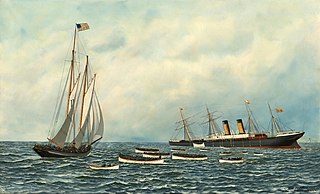
The Phantom was a 19th-century Sandy Hook pilot boat built in 1867. The schooner was considered a model for her type with a reputation for being very fast. She helped rescue the passengers on the steamship SS Oregon when it sank in 1886. She was one of the pilot-boats that was lost in the Great Blizzard of 1888.

The D. J. Lawlor was a 19th-century Sandy Hook pilot boat built in 1881. The schooner was considered the largest for her type, noted for her seaworthiness and heavy weather performance. She was named after the prominent Boston shipbuilder Dennison J. Lawlor. She was struck by a fishing schooner Horace B. Parker, in 1895, and was replaced by the pilot-boat Liberty in 1896.
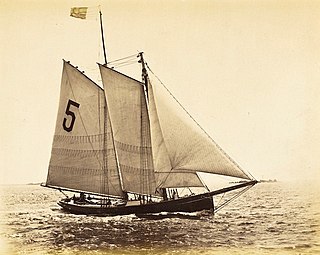
The Hesper was a 19th-century pilot boat built in 1884, as a Boston yacht and pilot-boat for merchant and ship owner George W. Lawler. She was known to be the largest pilot boat under the American flag at 104 feet long and the fastest of the Boston fleet. She competed in several first-class sailing races, and in 1886, the Hesper won the silver cup in what was known as the first Fishermen's Race.
